Email Best Practices
Can email marketing still drive high engagement?
Lately, some businesses have been navigating the same questions when it comes to their marketing mix: is email still an effective marketing tactic in the age of social media, video, and digital advertising.

PUBLISHED ON
Lately, some businesses have been navigating the same questions when it comes to their marketing mix: is email still an effective marketing tactic in the age of social media, video, and digital advertising.
Mailjet recently teamed up with The Clutch.co and The Manifest to bring some new research on how businesses (continue) to rely on email to drive engagement.
To cut to the chase - Email marketing is very much thriving, and according to the recent survey by The Manifest, a business news and how-to website, 69 percent of businesses invest in email marketing, with nearly 75% of all businesses sending emails on at least a weekly basis.
In addition, 43 percent of businesses plan to invest more in email marketing in the next year – the third-highest digital marketing channel.
In the face of all these other channels, why does email continue to grow? Put simply - it works. In fact, email has a median ROI of 122% which is 4x the ROI of any other channel listed above.
Email marketing is effective and helps businesses directly reach their customers. Increasingly, it is important for businesses to use email marketing because it is the most direct way to get your content in front of prospective consumers, keep existing consumers engaged, and grow an engaged consumer base.
Table of content
Table of content
Social Media Versus Email Marketing
Email is one of the best ways to get your content in front of your intended audience.
Ninety percent of emails end up in the correct inbox. Consumers who receive emails from brands and companies have already given their consent to receive these messages, making the most engaged segment of your target audience accessible with the click of a button.
“Email marketing works,” said David Mihm, founder of newsletter generator Tidings. “You own your email list, you own your subscribers. You’re not renting them from Google, Facebook, Instagram, Twitter, or any other platform.”
Because consumers have to subscribe to an email list, email marketing is a rare opportunity to only reach people who are genuinely interested in your product or service.
It’s difficult to reach customers on social media. The audience is so broad, and it is very easy for posts to get lost on a newsfeed. Only 2 percent of people see a post on their Facebook News Feeds. Once again - compared this to the 90% of email subscribers who receive your emails, the 25% (on average) who open your email, and the 20% (on average) who click links.
As outlined more here, 100K Facebook followers means the content will be served to 2000 people. At best 5% click through to your website for a total of 100 people who will engage with your content.
100K email subscribers means the content will be served to 90K people, with 4500 clicks back to your site. This is where the 4x ROI comes from.
Consumers are more engaged with your brand on email marketing than on social media.
Frequency Matters
How often you send emails impacts the effectiveness of your email marketing. Thirty two percent of businesses send emails daily, and 41 percent send them weekly.
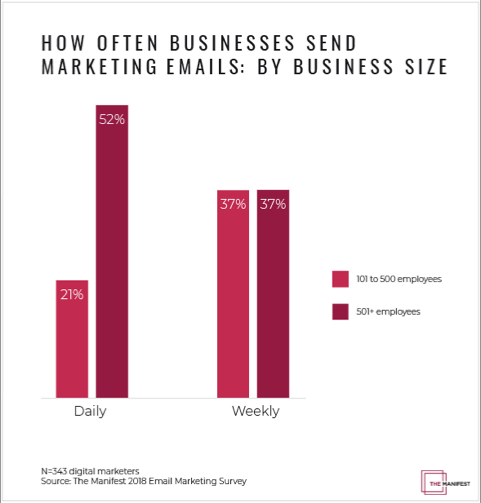
The frequency of your emails should depend on your target audience.
“If you have something important to say, then send an email,” said Ben Bradley, managing partner and creative director of digital marketing agency Macon Raine. “But sending too many emails is annoying. Your important news gets lost. If you believe that it’s going to be useful to your customers, then by all means, send it. If you suspect at all that they may not like it, it’s better to err on the side of caution.”
Send emails at a frequency that makes sense for your business and industry.
Larger businesses have larger customer bases. Because of this, larger companies tend to send emails more frequently. Fifty-two percent of businesses with 500 employees or more send emails daily compared to 21 percent of smaller businesses with 101 to 500 employees.
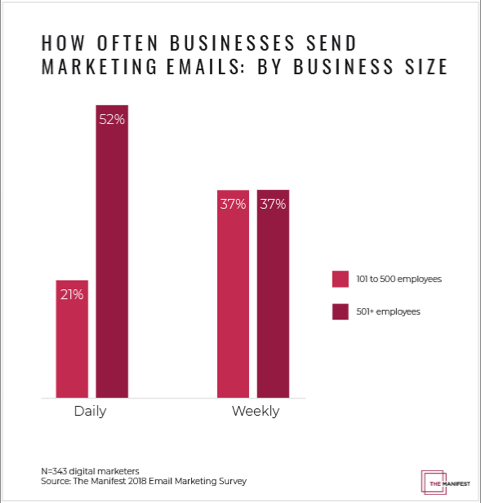
There is a fine line companies can cross by sending too many emails, it becomes annoying, and the important information gets lost. Sending emails just to send emails will only frustrate customers, which could lead them to unsubscribe.
Only send an email that has real value to your audience and pay close attention to engagement rates to identify when, how, and how frequently your audience wants to receive your emails.
What Emails to Send
Companies send a variety of emails to their customers, such as promotional emails, newsletters, event invitations, exclusive content and more.
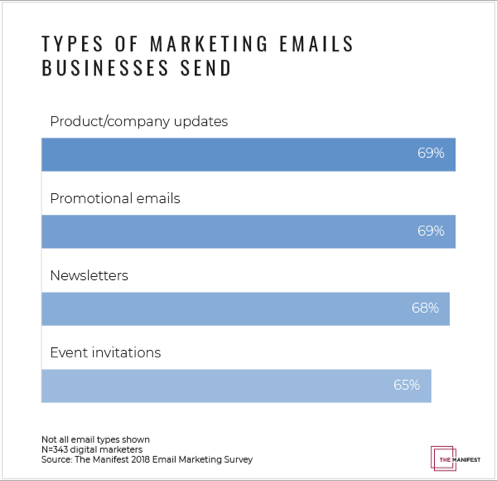
A variety of emails can keep customers engaged, but businesses should inform their audience what types of emails they will be sending. It is important to disclose the types of emails customers will receive so the company maintains transparency.
Email Marketing Goals
Companies don’t just send emails for fun. There is ultimately a goal for email marketing. Twenty-nine percent of companies’ main email marketing goal is growing and retaining their customers, while 22 percent of companies are trying to increase engagement.
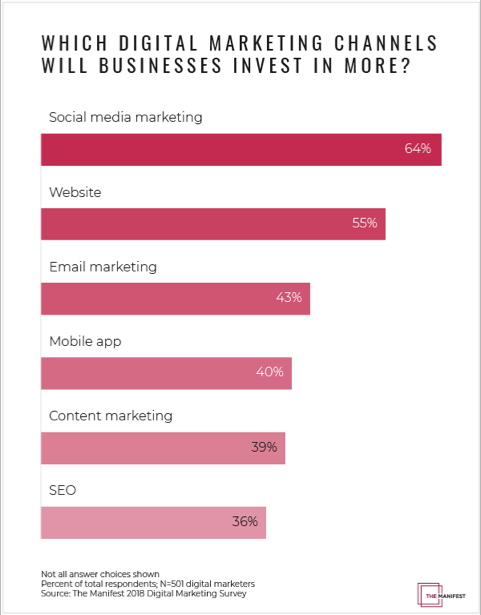
Email can successfully grow and keep current and potential customers’ interest and also keep them engaged.
Email marketing goals also vary by company size; larger companies are more likely to use email marketing to increase engagement, while smaller companies use it to grow/retain their customer base and build brand awareness.
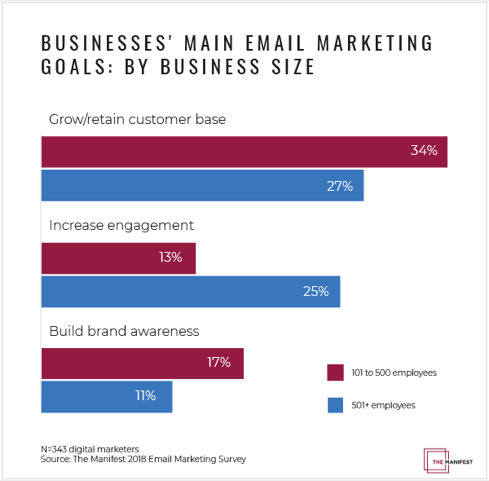
Larger, more established companies already have a solid customer base, so they should work on engaging and maintaining the customers they have.
Smaller companies, who don’t yet have a loyal following, should focus on building their customer base and increasing brand awareness alongside building lasting engagement. In the early days, it’s more important to get quality people who like what you’re doing than a large list of people who could take it or leave it.
Smaller companies mostly use email marketing to establish their spot in the industry.
Don’t Count Out Email Marketing
Email marketing benefits companies by growing and maintaining their customers while also increasing engagement with their site and brand.
Businesses use email marketing because it’s proven to work and is an effective digital marketing strategy. Email marketing certainly is not dead and is not going anywhere anytime soon.
***
This post was written by Kirsten Herhold. Kristen is a content writer and marketer at The Manifest and Clutch.
Related readings
Popular posts

Top email marketing trends for 2022
To the outsiders, it can sometimes feel like email hasn't changed that much since it was created. Maybe this is why some are so persistent in...
Read more

Reducing email’s carbon footprint
When it comes to protecting our planet, every step toward cleaner practices – small and big – counts. So, what if we told you that emailing, as clean and green as it seems...
Read more

Marketing calendar 2024: Dates you shouldn’t miss this year
We finally got through 2023 (phew!) and Q1 is just around the corner. It’s time for you to start scribbling down your New Year’s Resolutions to make sure we start the year with a bang. If you’ve found your way here, we’re guessing that’s because creating a winning...
Read more



